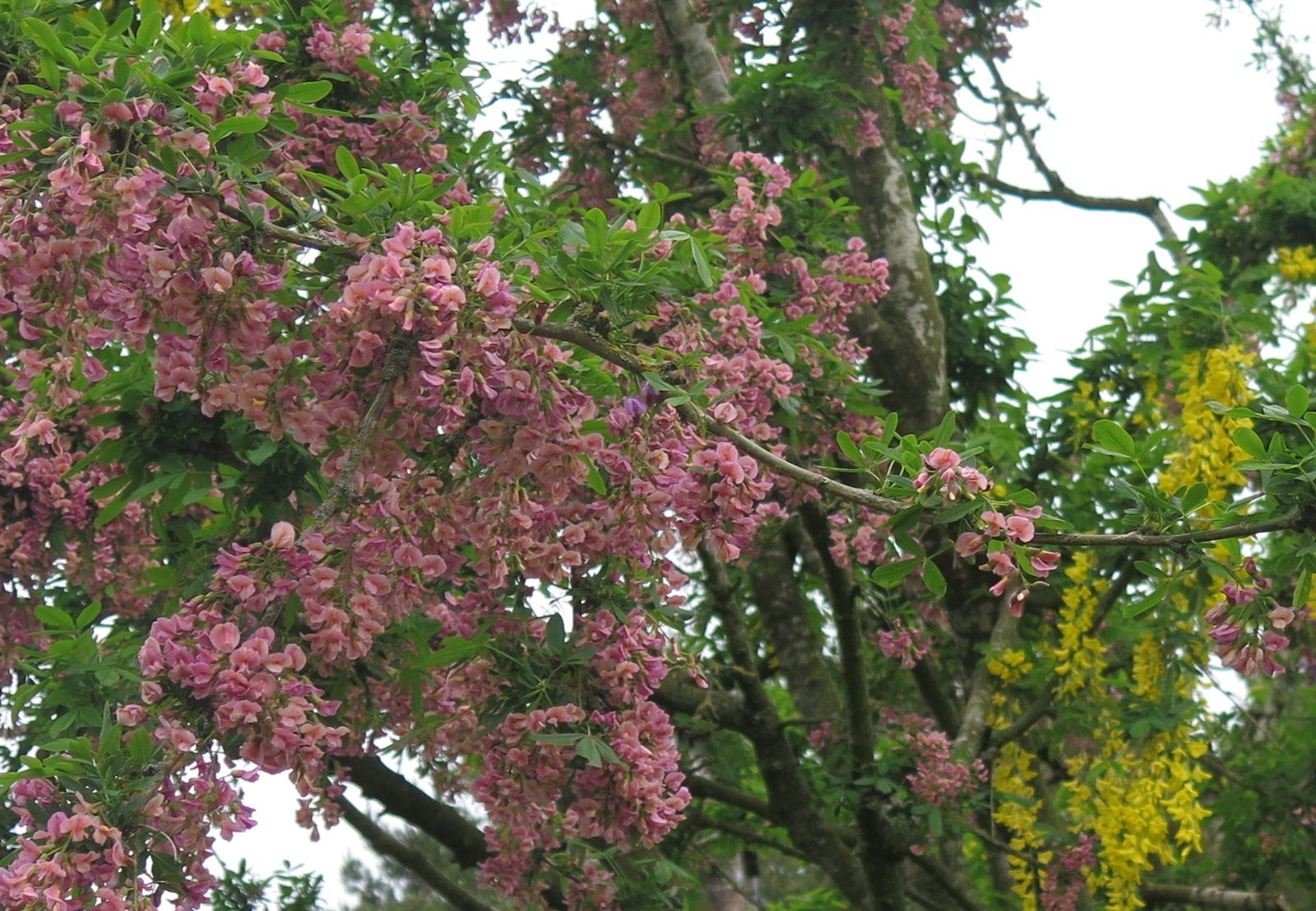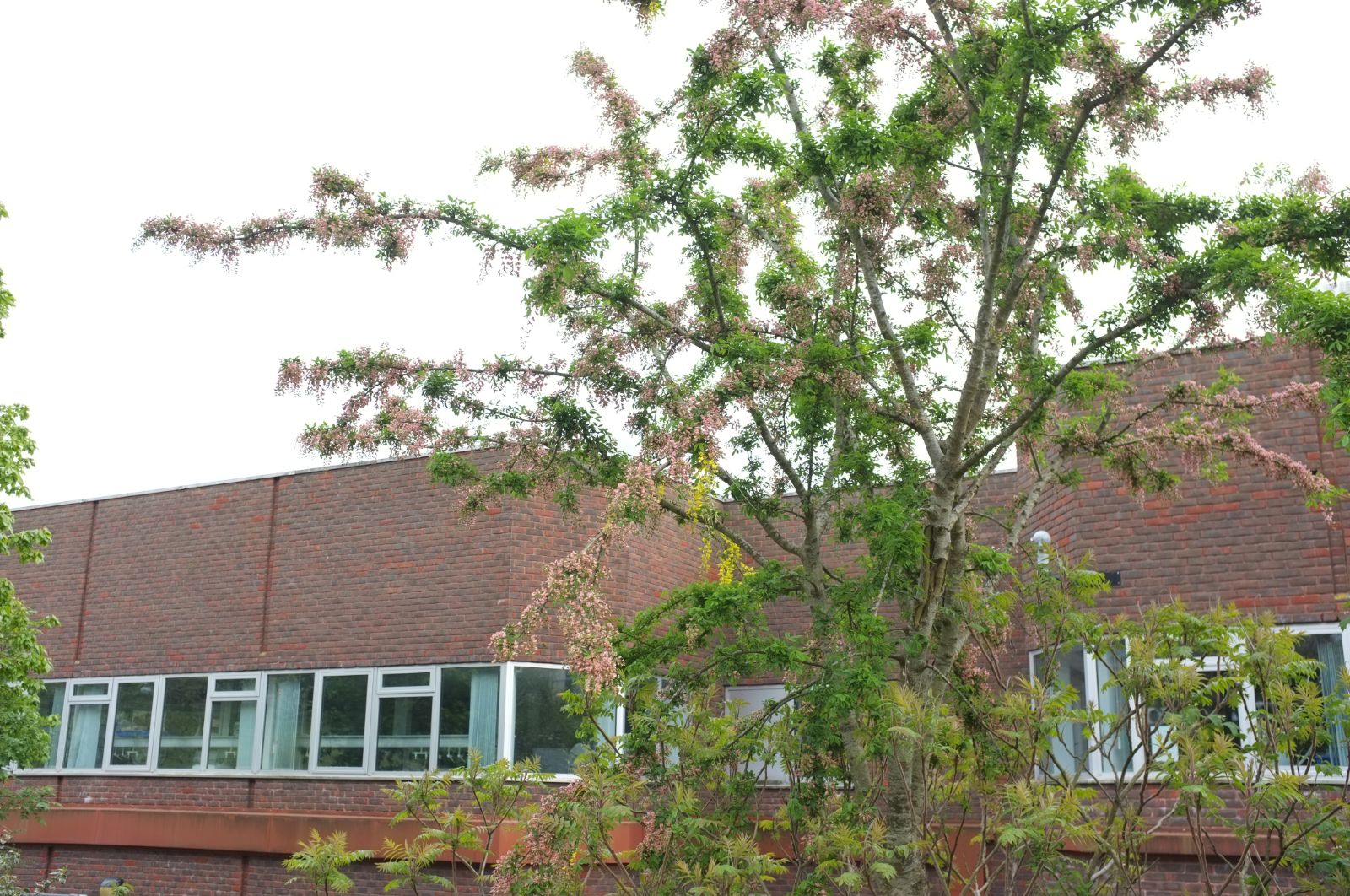+Laburnocytisus adamii
Credits
Article from Bean's Trees and Shrubs Hardy in the British Isles
Recommended citation
'+Laburnocytisus adamii' from the website Trees and Shrubs Online (treesandshrubsonline.
Genus
Synonyms
- Cytisus adamii Poiteau
- Laburnum adamii (Poiteau) Kirchn.
Other taxa in genus
A deciduous tree with the habit and aspect of L. anagyroides, up to 25 ft high. Leaflets oval or obovate, 11⁄2 to 21⁄2 in. long. Racemes 5 to 7 in. long; flowers yellowish suffused with purple, of the same shape and character as those of L. anagyroides, but, like the leaflets, smaller. The leaves and young shoots differ in being nearly or quite glabrous.
Although much inferior to either of the common laburnums in beauty, there is no more interesting tree in our gardens than this. It appeared in the nursery of Jean Louis Adam, at Vitry, near Paris, in 1825. According to Adam’s account, he had grafted the dwarf purple broom (Cytisus purpureus) on a common laburnum, and on the grafted plant a branch appeared with purplish-yellow flowers intermediate in hue between those of scion and stock – +L. adamii, in fact, as we know it today. A few years after +L. adamii had been put into commerce, a further remarkable phenomenon was observed in connection with this tree. It was found that it had a tendency to ‘sport’ back more or less to both the parent types. This character it has maintained ever since, and today almost every specimen of +Laburnocytisus adamii shows on its branches, not only the hybrid itself but pieces of pure L. anagyroides and pure Cytisus purpureus that have sprung spontaneously from its tissues. All three flower together, the curious tufts of the cytisus suggesting witches’ brooms. Many authorities have in times past doubted the possibility of a hybrid being produced by grafting, but the correctness of Adam’s account was proved by Prof. Winkler of Tübingen, who produced graft hybrids between the tomato and black nightshade. Further, a similar instance has been brought to light of graft hybrids between medlar and hawthorn (see + Crataegomespilus). These graft hybrids have been termed ‘chimaeras’, because there seems to be a mixture of the parents in their tissues, rather than a genuine and entire fusion. The outer tissues are often found under the microscope to resemble those of one parent, the inner ones those of the other.


